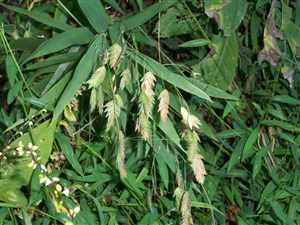Oats (Avena sativa), Oat grass (Arrhenatherum), Wild oats (Chasmanthium latifolium)
Main Facts about Oats

Using Oats
Oats contain beta glucan, a dietary fiber that has generated interest for its cholesterol-lowering ability. They are a great source of antioxidants. Daily consumption of whole-grain oat cereal can support vascular health. The herb has also been widely used as a natural diuretic, a gentle tool that may help decrease bloating and support the kidneys and urinary tract. It is an excellent source of B vitamins, nutrients essential for energy production and mood stabilization. Oats are naturally rich in calcium, a nutrient that plays an important role in bone density. Oats are also a love potion, supporting sexual health and increasing libido by nourishing the endocrine system and regulating hormones. Oatgrass feeds intestinal flora (probiotics). Good for skin problems. Oatmeal added to baths or made into poultices is a folk remedy for dry, itchy skin and eczema.Oats is a remedy for: Anxiety
Caution!
The only contraindication is for people with celiac disease.Cooking with Oats
Roasted oat grass seeds can be used as a coffee substitute with less caffeine. Usually consumed as oatmeal and rolled oats.How to grow Oats
Oats are grown in temperate regions. They have a lower summer heat requirement and greater tolerance of rain than other cereals, so are particularly important in areas with cool, wet summers. Oats are an annual plant, and can be planted either in autumn (for late summer harvest) or in the spring (for early autumn harvest).| Nettle |
Olive
|